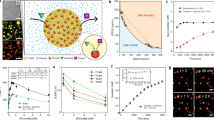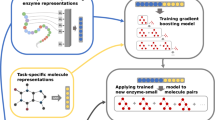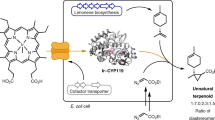Abstract
THE coupling of enzymes onto insoluble support materials offers several advantages including increased stabilization of the enzyme, re-use of the enzyme without tedious recovery by precipitation, and close control of the extent of conversion in enzyme reactors. Coupling may also afford an improved heat-stability, greater specificity, or a different pH optimum compared with the enzyme in the free state. On the whole, work on insolubilized enzymes has been confined to single enzymes separated from the organism that produced them and coupled to non-living supports1–4. The work reported here concerns the coupling of enzymes onto living cells in order to supplement the array of enzymes naturally produced.
This is a preview of subscription content, access via your institution
Access options
Subscribe to this journal
Receive 51 print issues and online access
$199.00 per year
only $3.90 per issue
Buy this article
- Purchase on SpringerLink
- Instant access to full article PDF
Prices may be subject to local taxes which are calculated during checkout
Similar content being viewed by others
References
Silman, I. H., and Katchalski, E., Ann. Rev. Biochem., 873 (1966).
Barker, S. A., Somers, P. J., Epton, R., and McLaren, J. V., Carbohydrate Res., 14, 287 (1970).
Axen, R., Porath, J., and Ernback, S., Nature, 214, 1302 (1967).
Weetall, H. H., Biochim. Biophys. Acta, 212, 1 (1970).
Lampen, J. O., Anton van Leeuwenhoek, 34, 1 (1968).
Hopkins, R. H., Proc. Eur. Brew. Conv. Baden-Baden Congress, 315 (1955).
Barker, S. A., Emery, A. N., and Novais, J. M., Process Biochem., 6(10), 11 (1971).
Gilliland, R. B., J. Inst. Brewing, 65, 424 (1959).
Clark, A. G., J. Inst. Brewing, 66, 318 (1960).
Watson, T. G., and Hough, J. S., J. Inst. Brewing, 72, 547 (1966).
Author information
Authors and Affiliations
Rights and permissions
About this article
Cite this article
HOUGH, J., LYONS, T. Couplings of Enzymes onto Microorganisms. Nature 235, 389 (1972). https://doi.org/10.1038/235389a0
Received:
Issue date:
DOI: https://doi.org/10.1038/235389a0
This article is cited by
-
Immobilized Cells
Folia Microbiologica (1983)



